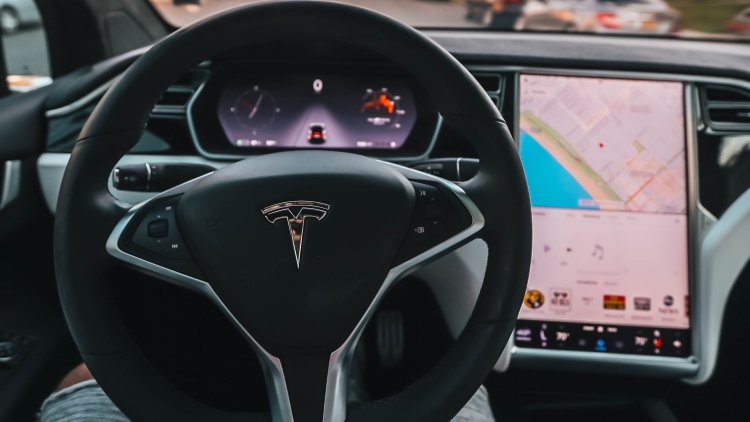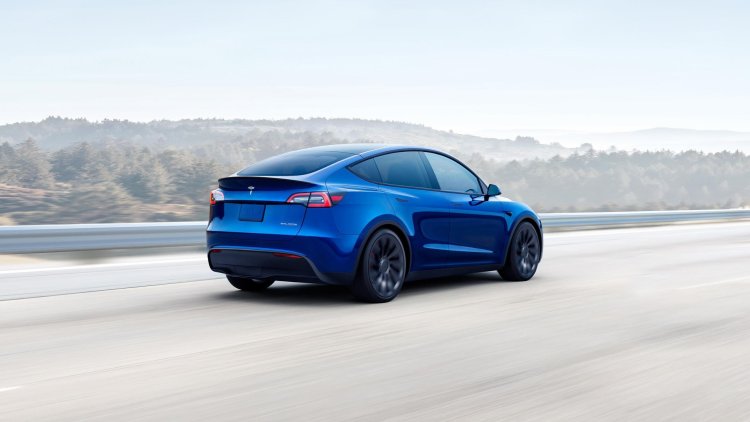Delving into Tesla's Advanced Autopilot System: Explore the Hardware Components and AI Technology Behind the Magic
Get an exclusive look into Tesla's advanced Autopilot system! Learn about the cutting-edge hardware components and AI technology that powers this revolutionary driving assistance system

Recently, Tesla, the electric car manufacturing giant, revealed the secret magic behind their autopilot system. The autopilot system in Tesla's electric vehicles is an advanced driver assistance system that uses various sensors and cameras to assist drivers in driving their vehicles safely. The company claims that its autopilot system is the most advanced driver assistance system in the market, and it has been constantly improving over the years. In this article, we will delve into the details of Tesla's autopilot system and understand how it works.
The Hardware Components of Tesla's Autopilot System
Tesla's autopilot system is made up of several hardware components that work together to create a 360-degree view of the car's surroundings. The primary hardware components of the autopilot system are:
- Cameras: Tesla's autopilot system uses eight cameras, which are positioned around the car to provide a complete view of the surroundings. These cameras are positioned on the front, rear, sides, and corners of the car, and they work together to provide a high-resolution image of the car's surroundings.
- Ultrasonic Sensors: Tesla's autopilot system also uses 12 ultrasonic sensors, which are positioned around the car to detect nearby objects. These sensors work together to create a 360-degree view of the car's surroundings and are capable of detecting objects up to 16 feet away.
- Radar: Tesla's autopilot system also uses radar, which is positioned behind the front bumper of the car. The radar emits radio waves that bounce off nearby objects, allowing the system to detect and track objects even in poor weather conditions.
- GPS: Tesla's autopilot system also uses GPS, which is used to locate the car and provide information about the road ahead. The system uses GPS data to determine the car's location, speed, and direction of travel.

How Tesla's Autopilot System Works
Tesla's autopilot system uses a combination of computer vision, machine learning, and artificial intelligence to interpret the data collected by its cameras, sensors, and radar. The system uses this data to create a real-time 3D map of the car's surroundings and identify objects such as other vehicles, pedestrians, and road signs. The system then uses this information to make driving decisions such as accelerating, braking, and steering.
Tesla's autopilot system is designed to work in a variety of situations, including highway driving, city driving, and parking. The system is capable of performing tasks such as staying in the correct lane, changing lanes, and passing other vehicles safely. The system can also detect and respond to traffic signals and stop signs, and it can park the car in tight spaces with the touch of a button.
One of the key features of Tesla's autopilot system is its ability to learn and improve over time. The system uses machine learning algorithms to analyze the data collected by its sensors and cameras and improve its performance. This means that the more data the system collects, the better it becomes at making driving decisions.
Safety Features of Tesla's Autopilot System
Tesla's autopilot system is designed with safety in mind. The system is constantly monitoring the car's surroundings and is capable of detecting potential hazards such as other vehicles, pedestrians, and obstacles. If the system detects a potential hazard, it will alert the driver and take action to avoid a collision. For example, the system may apply the brakes or steer the car away from the hazard.
Tesla's autopilot system also has several safety features built-in, such as:
- Collision Avoidance: Tesla's autopilot system is capable of detecting potential collisions and taking action to avoid them. The system will alert the driver and take action, such as applying the brakes or steering the car away from the hazard.
- Emergency Braking: If the system detects a potential collision and the driver does not respond to the alert, the system will automatically apply the brakes to avoid a collision.
- Lane Departure Warning: Tesla's autopilot system is capable of detecting when the car is drifting out of its lane and will alert the driver to take corrective action.
- Speed Limit Warning: Tesla's autopilot system is capable of detecting speed limit signs and will alert the driver if they are exceeding the speed limit.
- Blind Spot Monitoring: Tesla's autopilot system is capable of detecting vehicles in the car's blind spot and will alert the driver if they attempt to change lanes.
- Autopark: Tesla's autopilot system is capable of parking the car in tight spaces with the touch of a button. This feature is designed to help drivers park in challenging situations and reduces the risk of accidents.
Conclusion
Tesla's autopilot system is an advanced driver assistance system that uses a combination of hardware components and software algorithms to assist drivers in driving their vehicles safely. The system uses computer vision, machine learning, and artificial intelligence to interpret the data collected by its sensors and cameras and make driving decisions such as accelerating, braking, and steering. The system is designed with safety in mind and has several safety features built-in, such as collision avoidance, emergency braking, and blind spot monitoring. With its constantly evolving technology, Tesla's autopilot system is set to revolutionize the way we drive and make our roads safer for everyone.

What are some of the potential risks associated with using Tesla's autopilot system?
While Tesla's autopilot system is designed to assist drivers and improve safety, there are potential risks associated with using the system. Here are a few examples:
- Overreliance on the System: One potential risk of using Tesla's autopilot system is that drivers may become too reliant on the system and fail to pay attention to the road. This could lead to accidents if the system fails or encounters a situation it is not equipped to handle.
- Limited Capabilities: While Tesla's autopilot system is capable of performing a range of driving tasks, it is not a fully autonomous system and still requires the driver to remain alert and ready to take monitoring of the vehicle at any time. This means that the system may not be capable to handle all driving situations, such as navigating complex intersections or dealing with unexpected obstacles on the road.
- Cybersecurity Concerns: Because Tesla's autopilot system relies heavily on software and wireless connectivity, there is a risk of cyber attacks that could compromise the system's functionality or even take control of the vehicle.
- Regulatory Challenges: Tesla's autopilot system has faced regulatory scrutiny in some jurisdictions, with some authorities expressing concerns about the safety of the system and its compliance with local laws and regulations.
- Liability Issues: In the event of an accident involving a Tesla vehicle that was using the autopilot system, there may be questions about who is liable for the damages or injuries. This could lead to legal challenges and disputes that could be difficult to resolve.
FAQs
a. How can drivers avoid becoming too reliant on Tesla's autopilot system?
Drivers should always remain alert and engaged while using the autopilot system, and be prepared to take control of the vehicle at any time. It's also important to familiarize themselves with the system's limitations and capabilities.
b. What should drivers do if Tesla's autopilot system encounters a situation it can't handle?
Drivers should be prepared to take control of the vehicle and safely navigate the situation themselves. They should also report any issues or concerns with the system to Tesla as soon as possible.
c. How can drivers protect against cybersecurity threats to Tesla's autopilot system?
Drivers should ensure that their vehicle's software is up-to-date and that they follow best practices for online security, such as using strong passwords and avoiding unsecured Wi-Fi networks.
d. What regulatory challenges has Tesla's autopilot system faced?
Tesla has faced scrutiny from regulatory bodies in some jurisdictions, with concerns being raised about the safety of the system and its compliance with local laws and regulations.
e. How can liability issues related to Tesla's autopilot system be resolved?
Liability issues related to accidents involving Tesla's autopilot system can be complex and difficult to resolve. In general, the driver may still be held responsible for any accidents that occur while using the system, but this can vary depending on the circumstances of the case.
f. Is it safe to use Tesla's autopilot system?
While Tesla's autopilot system is designed to improve safety, there are potential risks associated with using the system, as outlined in the article. It's important for drivers to weigh these risks and use the system responsibly, remaining alert and ready to receive control of the vehicle at any time.












